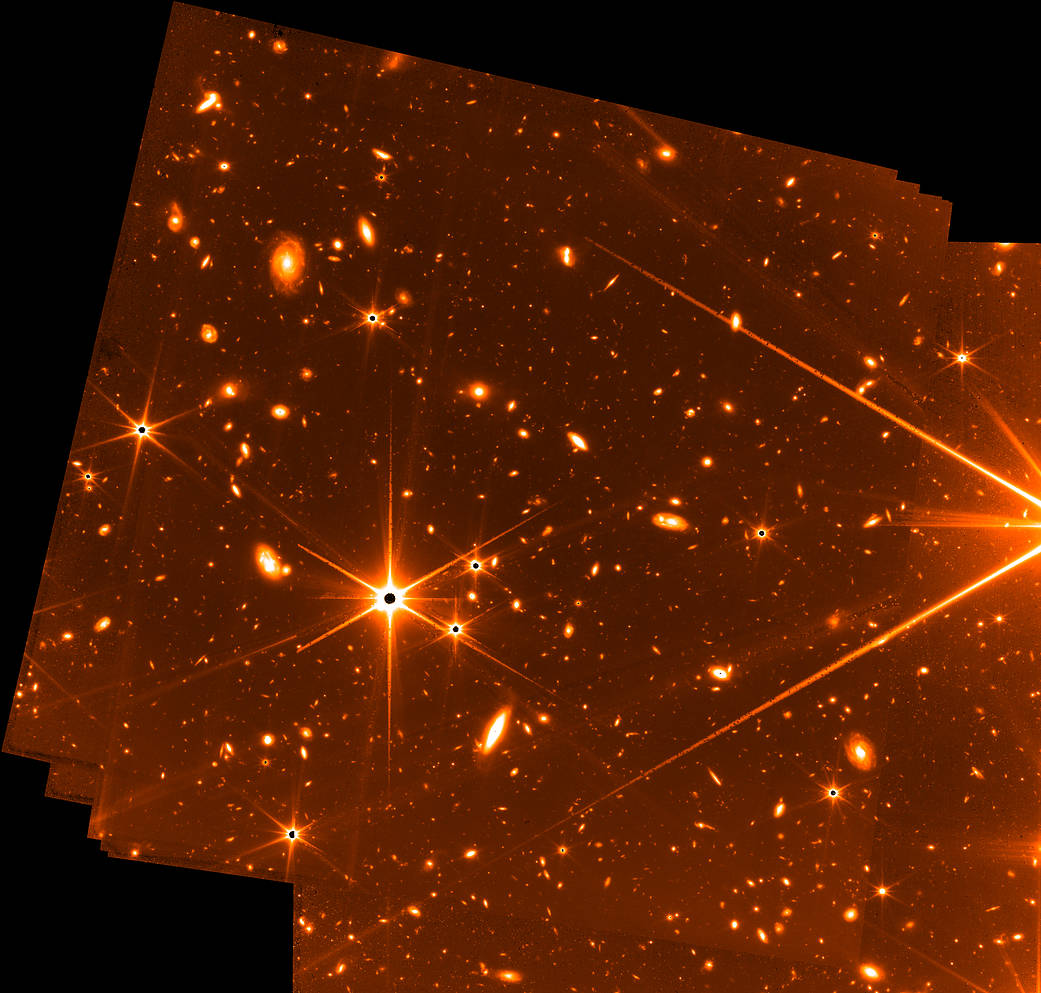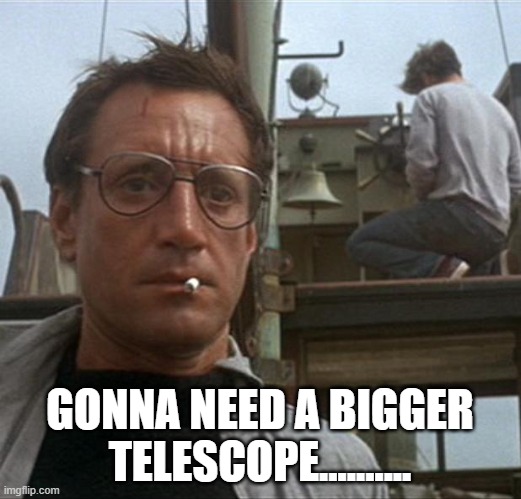
Posted on 07/08/2022 7:05:23 AM PDT by Red Badger
NASA has a provided a tantalizing teaser photo ahead of the highly-anticipated release next week of the first deep-space images from the James Webb Telescope – an instrument so powerful it can peer back into the origins of the Universe.

An engineering test image. (NASA, CSA, and FGS team)
The US$10 billion observatory – launched in December last year and now orbiting the Sun a million miles (1.5 million kilometers) away from Earth – can look where no telescope has looked before thanks to its enormous primary mirror and instruments that focus on infrared, allowing it to peer through dust and gas.
The first fully formed pictures are set for release on July 12, but NASA provided an engineering test photo on Wednesday – the result of 72 exposures over 32 hours that shows a set of distant stars and galaxies.
The image has some "rough-around-the-edges" qualities, NASA said in a statement, but is still "among the deepest images of the universe ever taken" and offers a "tantalizing glimpse" at what will be revealed in the coming weeks, months, and years.
"When this image was taken, I was thrilled to clearly see all the detailed structure in these faint galaxies," said Neil Rowlands, program scientist for Webb's Fine Guidance Sensor at Honeywell Aerospace.
Jane Rigby, Webb's operations scientist at NASA's Goddard Space Flight Center, said the "faintest blobs in this image are exactly the types of faint galaxies that Webb will study in its first year of science operations."
"" The engineering test image. (NASA, CSA, and FGS team)
NASA administrator Bill Nelson said last week that Webb is able to gaze further into the cosmos than any telescope before it.
"It's going to explore objects in the solar system and atmospheres of exoplanets orbiting other stars, giving us clues as to whether potentially their atmospheres are similar to our own," he said.
"It may answer some questions that we have: Where do we come from? What more is out there? Who are we? And of course, it's going to answer some questions that we don't even know what the questions are."
Webb's infrared capabilities allow it to see back in time to the Big Bang, which happened 13.8 billion years ago.
Because the Universe is expanding, light from the earliest stars shifts from the ultraviolet and visible wavelengths it was emitted in, to longer infrared wavelengths – which Webb is equipped to detect at an unprecedented resolution.
At present, the earliest cosmological observations date to within 330 million years of the Big Bang, but with Webb's capacities, astronomers believe they will easily break the record.
The ones with black and spikes are bright single stars in the foreground, roughly equivalent to seeing things at arm’s-length while viewing mountains fifty miles away.
I just can’t read that quickly; I have to read it as sung, silently, though, in the interest of anyone within hearing range.
We, America, needs MORE of this.
The spectators reactions are fun, and revealing.
Nearby stars.
Elvis did a version also. Apparently,he loved Gospel music, black or white styles.
Thanks Red Badger.
· join · view topics · view or post blog · bookmark ·
· post new topic · subscribe ·Google news searches: exoplanet · exosolar · extrasolar ·
And what will the NASA knuckleheads say when they find galaxies >> (much older) than 13.8 billions of years old?
It will be entertaining to watch the first string of lies as they try to explain away the obvious.

1996. That is when this project started. I've been waiting a long time for this.
Elvis was one-of-a-kind.
Like the difference between looking at those 1950s Sears & Roebucks catalogs and the 1980s Playboy...
I believe they are digital “cut outs” to lessen the overexposure from closer stars
Disclaimer: Opinions posted on Free Republic are those of the individual posters and do not necessarily represent the opinion of Free Republic or its management. All materials posted herein are protected by copyright law and the exemption for fair use of copyrighted works.